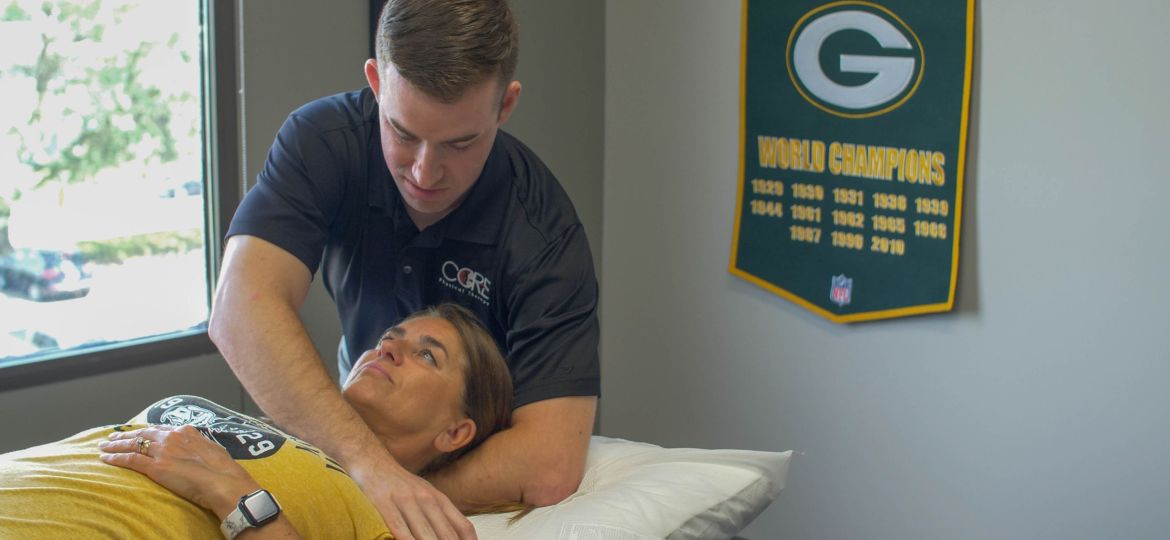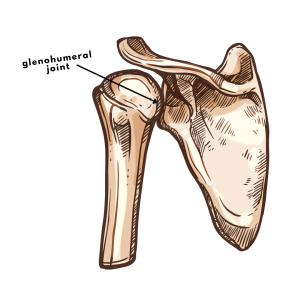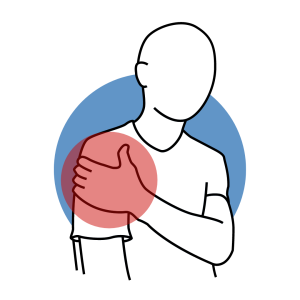
Shoulder pain is a common reason many patients come to Core Physical Therapy. Some are struggling to lift the weights they always could or push their toddler on the swing. Others can’t reach above their head or feel sharp pain when switching positions. More than likely they are experiencing issues with the glenohumeral joint.
The glenohumeral joint is a complex and extremely important joint in the body for function. The extra rotation and movement allowed by the glenohumeral joint (a ball and socket joint) also makes it susceptible to injury. It is, in fact, the most commonly injured joint in the body.
Let’s take a look at some common shoulder problems patients have experienced.
Common Shoulder Injuries
Repetitive motion of the upper extremity away from the body in an outstretched or overhead position (think tackling a weekend painting project) can lead to shoulder pain.
Referred pain from the neck. Cervical levels 5-6 (located in your lower neck) often send pain specifically to the shoulder area.
Rotator cuff damage. The rotator cuff is four small muscles that help to dynamically control the stability of the glenohumeral joint. They are susceptible to injury.
Impingement. Poor posture and lack of balance of structures can lead to tendonitis (inflammation of the tendon) or even tendinopathy (chronic state of tendonitis) in a small section of the biceps tendon as it enters the glenohumeral joint.
Arthritis. Inflammation can occur from degeneration of cartilage in glenohumeral joint (oseto, rheumatoid).
Subacromial bursitis. A fluid filled sac that protects your shoulder tissues can become inflamed.
Dislocation. This occurs when the ball is forced to leave the socket. This often includes a fall on an outstretched hand or another accident.
Adhesive capsulitis (“Frozen Shoulder”). This involves pain and progressive tightening of the shoulder capsule.
The physical therapists here at Core treat all of these conditions and more.
Protect & Prevent Injury
So what can we do to protect and prevent injury at our shoulder joint? We’ve got a few ideas. 😉
- Listen to your body! If you are to the point of having pain in a shoulder, your body is sending a clear and strong signal that it wants help.
- Stay active- MOVE! Working out and staying in good aerobic shape helps tissues heal and stay healthy.
- Warm-up before specific upper extremity exercises. 10-15 minutes of general exercise getting your heart rate up before engaging in specific exercises helps prevent injury.
- Avoid lifting any kind of weight over-head. This places your shoulder in a closed position and leaves it susceptible to injury.
- Be cognizant of your posture. Forward rounded shoulders definitely can make your shoulder prone to injury.
- Re-evaluate your work and home ergonomic set-up. We have seen dozens of patients this past year for shoulder pain that was initially created by poor ergonomic set-ups when they had to move their office to home due to the pandemic.
The PT’s at Core can help you design workout routines, perform postural evaluations and talk through and make suggestions for your ergonomic set-up even before there is a problem.
Heal Your Shoulder Pain
But what do you do when you begin to have shoulder pain?
Try ice. Icing is a super effective and easy way to reduce shoulder pain. 10-15 minutes two to three times a day can make a significant difference in your discomfort.

Talk to your doctor about the possibility of oral anti-inflammatories or topical creams. They can really help!
Get on your physical therapist’s schedule ASAP. Core PT’s are specifically trained to evaluate and treat your shoulder pain. We evaluate the whole body in relation to your shoulder and often times find issues away from the actual glenohumeral joint that are contributing to shoulder pain. Iowa is a direct access state, meaning most insurance plans don’t require a visit to your doctor first. We also treat patients that have had their shoulder problem corrected with surgery; working with your surgeon for optimal outcomes.
Come see us today for prevention and or to begin the process of diagnosing and treating your shoulder pain!
